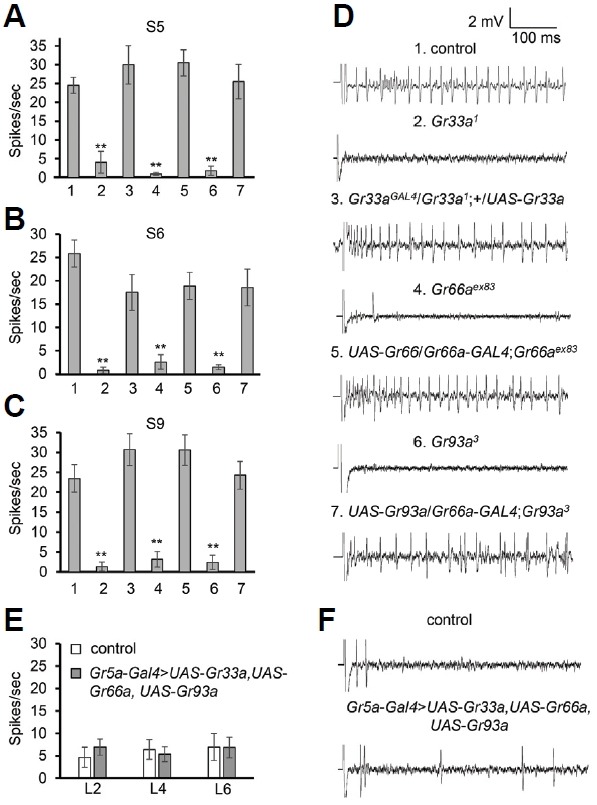Fig. 3.

Gr33a, Gr66a, and Gr93a were indispensable for coumarin-induced nerve firing. (A–C) Average frequencies of action potentials (spikes/s) to 1 mM coumarin are shown for the indicated genotypes: control, mutants (Gr33a1, Gr66aex83, Gr93a3) and rescue flies. n ≥ 10. The number 1, 2, 3, 4, 5, 6, and 7 indicate control, Gr33a1, Gr33aGAL4/Gr33a1;+/UAS-Gr33a, Gr66aex83, UAS-Gr66/Gr66a-GAL4; Gr66aex83, Gr93a3 and UAS-Gr93a/Gr66a-GAL4;Gr93a3, respectively. The asterisks indicate significant differences from wild-type (**P < 0.01) using a single factor ANOVA with Scheffe’s analysis as a post hoc test to compare two sets of data. The error bars represent SEMs. Tip recordings were performed on S5 (A), S6 (B), and S9 (C) bristles, based on Carlson’s nomenclature. (D) Representative traces of coumarin-evoked nerve response on S6 bristles from the indicated genotypes. (E–F) Ecotopic expression of Gr33a, Gr66a and Gr93a in sugar sensing neuron. (E) Tip recordings were carried out on L2, L4, and L6 with the indicated flies. n ≥ 15. (F) Sample traces of coumarin-induced action potentials on L2 bristles from the indicated genotypes. The error bars represent SEMs.
